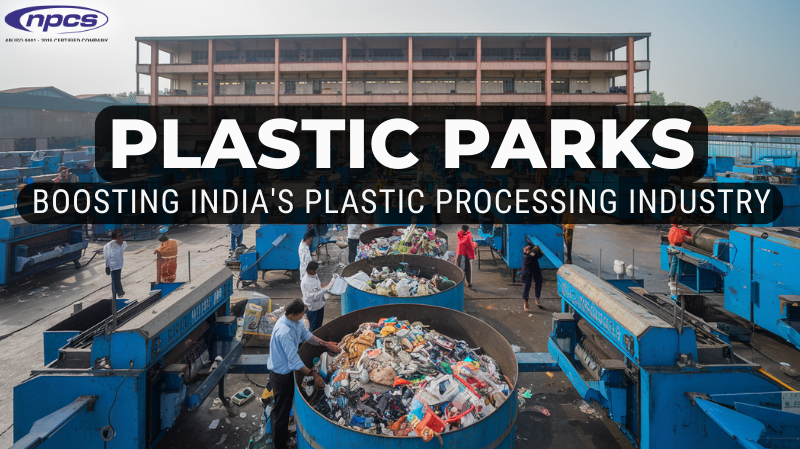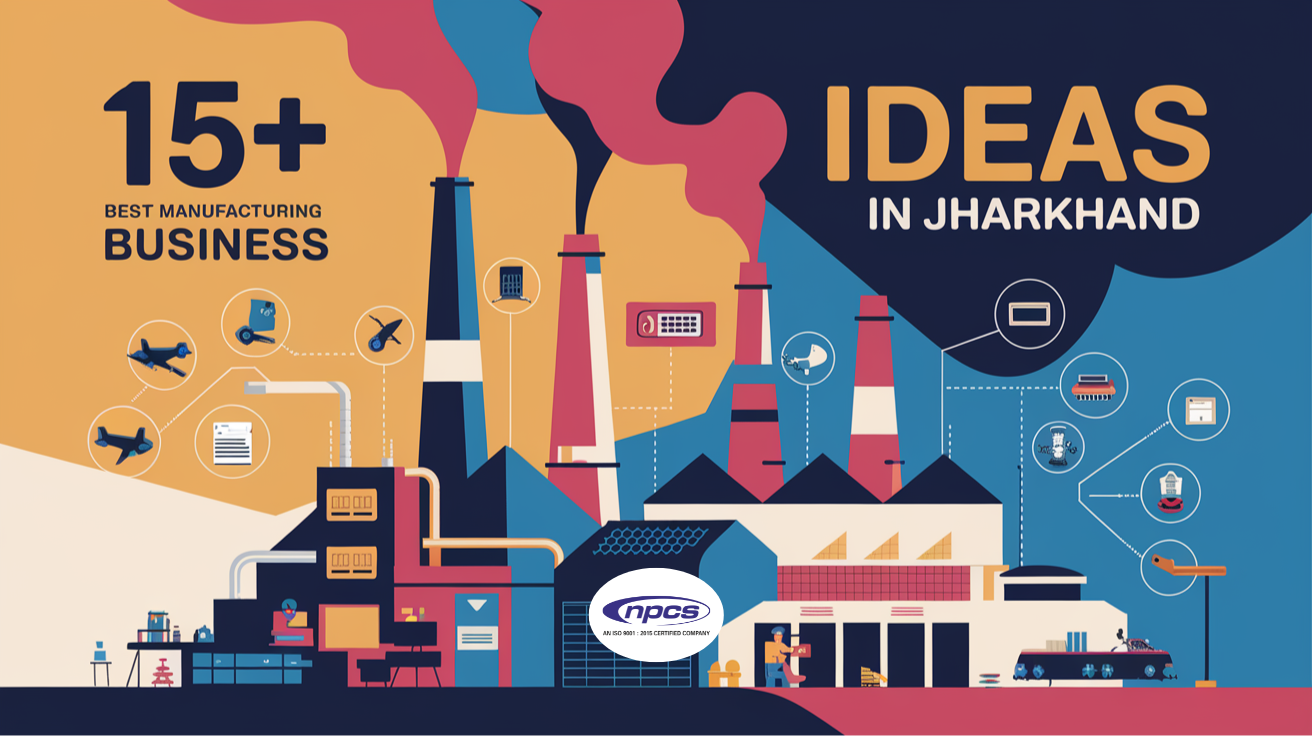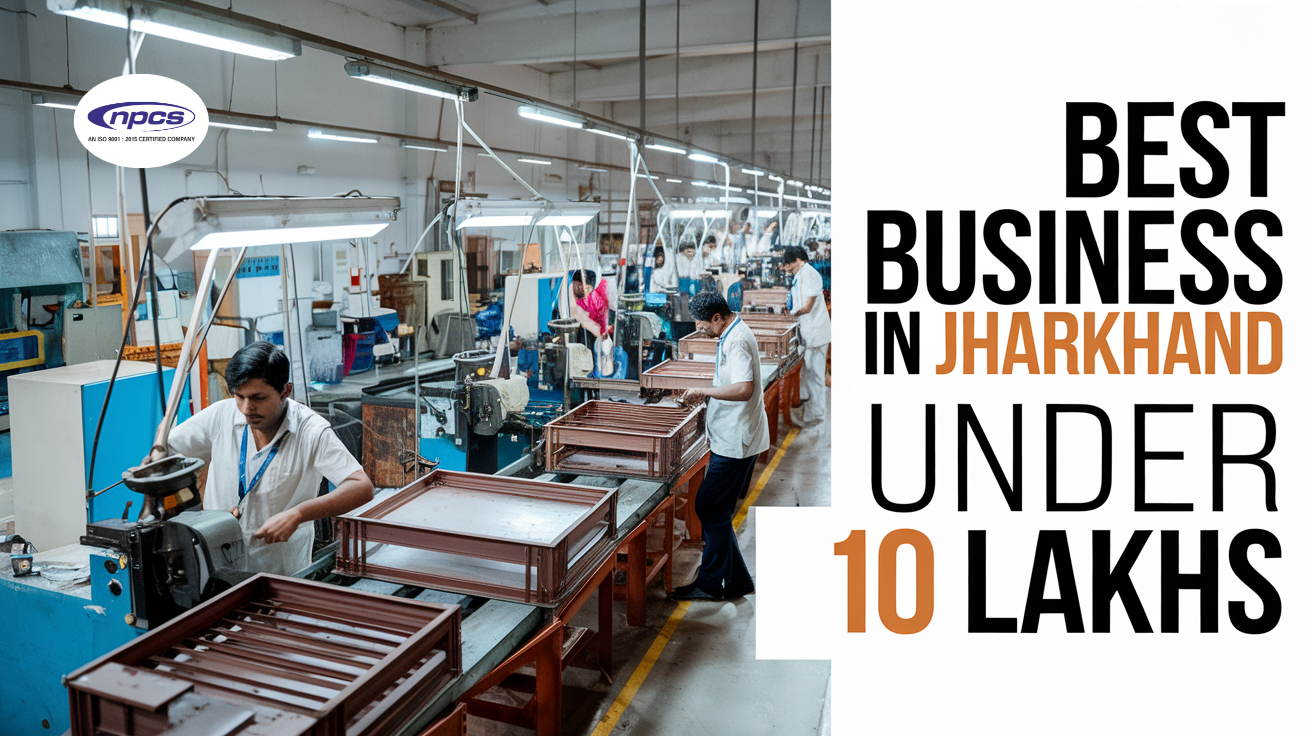The plastic processing sector in India plays a significant role as a subsector of the country’s petrochemical industry and plays a major role in production and purchase of plastic goods. To make this industry strong and firm, the Department of Chemicals and Petrochemicals (DCPC), Government of India, has initiated the Plastic Parks Scheme. The scheme is aimed at building world-class support infrastructure for plastic processing units, ensuring that there is a complete industry ecosystem and, making India the best place in the world for manufacture and trade of plastics. The scheme, which is anchored on a cluster based development ideology, is poised to transform the sector with a lot of investments, increased productive capacity and more jobs coming in.
Objectives and Vision of the Plastic Parks Scheme
The Plastic Parks scheme is a proactive measure oriented approach intended to solve the existing problems determinants of the materials processing industry as well as to look for relevant ways for its global globalizing orientation. The main purposes of this scheme are:
- The Growth of the Investment in the Petrochemicals Sector: The Government of the Country intends to draw in local and international investments into the Petrochemicals and the downstream plastics processing where the development of modern social and physical infrastructures is created.
- Increase Production and Exports: With improved industrial ecology, it is anticipated that this scheme will encourage a sharper increase in the output of plastic finished products and thus raise the volume of plastic export from India to other countries.
- Creating Employment Opportunities: The creation of Plastic Parks is expected to generate thousands of jobs, both direct and indirect, therefore addressing the issue of jobs in the areas where these parks will be established. This will entail labor skilled in different aspects of with the appropriate American civil engineering standards for plastics Engineers and other experts concerned with the production and processing of plastic and related industries.
- Fostering Innovation and Sustainability: The parks will promote innovation in plastic processing techniques, encourage the adoption of new technologies, and emphasize sustainable practices like recycling and eco-friendly plastic production.
Government Support for Plastic Parks
In order to implement this ambitious plan successfully the Government of India is providing considerable financial assistance to actualize these Plastic Parks. The support structure includes:
- Grant funding up to 50% of the project cost: This funding model lifts a large part of the financial burden from the stakeholders, making it easier for industries to set up in these parks.
- Maximum ceiling of Rs. 40 crore per project: The government has imposed a financial limit at a certain level per project in order to promote cost effective project completion.
- The bulk cost is to be met by state governments, industrial units, and banks: The remaining costs are to be paid for by state governments, industrial development corporations, the benefiting industries and financial institutions. This incentivizing method of intermingling funds encourages pent up demand from the industry in relation to the Government.
The scheme extends encouragement not only in financial terms but also in terms of technology, skill development, and development of value addition chain within the Plastics Parks.
Current Status of Plastic Parks Across India
Currently, the National Government has sanctioned 10 Plastic Parks in different states of India and this is the latest information available. These parks are in various phases of operationalization – some are almost ready while others are just taking off. The states where these parks are located include:
- Madhya Pradesh (2 parks)
- Odisha
- Jharkhand
- Tamil Nadu
- Uttarakhand
- Chhattisgarh
- Assam
- Uttar Pradesh
- Karnataka
The choice of these locations is also considerate of the regional balance. So as not to ignore the states that have the prospects of industrialization and development.
Key Features of Plastic Parks
The initiative of developing plastic parks has conceptualized certain features in a systematic manner. In order to enable plastic processing industries to operate with maximum efficiency. Some of these features are:
- Land has been earmarked measuring between 40 and 240 acres: Each park has been designed in such a way that it can accommodate a minimum of one plastic processing unit. The large area allows for future expansion which guarantees sustainability in the years to come.
- Availability of several industrial plots: These plots are purposefully built and developed for various plastic processing units. It can be made to fit the demands of any company. One that does extrusion, molding, recycling of plastics and the production of any other plastics.
- Provision of common infrastructure and amenities: One of the specific merits of these parks is the provision of shared facilities. Such as water supply, electricity, waste management, testing and R&D facilities, as well as other supportive services. This type of development cuts down the running costs of each unit significantly.
- Facilitation of technology integration as well as training and education of persons: The parks provide support for industries to adopt the latest technology in plastic processing. Training institutions establish themselves within these parks to train local people and prepare them for the current demands in the industry.
These parks provide companies an opportunity to work effectively within the space and with each other while maximizing creativity.
Impact of Plastic Parks on India’s Plastic Processing Industry
Plastic Parks scheme is estimated to be beneficial to the Indian plastic processing industry. The economy in general, in a number of ways:
- Attractive Investment Opportunities: The exceptional infrastructure provided in the Plastic Parks is expected to mobilize. A lot of investments from local and foreign companies. This will mean the setting up of more plastic processing units. Which will in turn increase the growth of the sector.
- Employment Opportunities: It is anticipated that the scheme will contribute directly or indirectly employment opportunities amounting to thousands. Such parks will boost the economies of the areas where they are built. The available jobs will include more than just manual labor. But will also include advanced positions in the plastic and petrochemical processing industries.
- Enhancing Business Resources: The Plastic Parks by way of enabling full fledged facilities and infrastructural development. It will enhance the competitiveness of Indian plastic products in the worldwide market. This is very important as India is transitioning into a contender in the market for plastic products. Which is majorly occupied by China and USA.
- Cluster Similar Industries: The cluster approach enables the setting up of interrelated industries in a keen manner to enable innovation and creativity. Such a setting helps in vice sharing, in cutting down costs and in improving efficiency.
- Emphasis on Environmental Considerations: The scheme has also been built with a platform for environmental protection. Drying and recycling facilities, as well as researchers concentrating on such production processes. Within those parks are part of these institutions in changing to the circular economy.
Conclusion: A Transformative Initiative for India’s Plastic Industry
The Plastic Parks concept is revolutionizing the infrastructure of plastic processing in India. Having advances in technology, basic facilities, and having a clustering approach. These parks help make India a competitive country in plastic manufacturing. The plastic processing industry anywhere around the globe. The movement will hence not only consolidate the industry within the country from attracting large investments, creating jobs, increasing production. Increasing exports but also foster creative and balanced development.
With time and as the scheme runs its course and these parks get operational in full cycle. It will alter the state of plastic processing in the country in a way. That will spur economic growth and job creation and bring about the use of green technologies. In this regard, it becomes clearer why the target of the Concept of Plastic Parks. The Government of India has identified it as part of its long-term policy to position the country. At the center for manufacturing and exporting petrochemicals.





